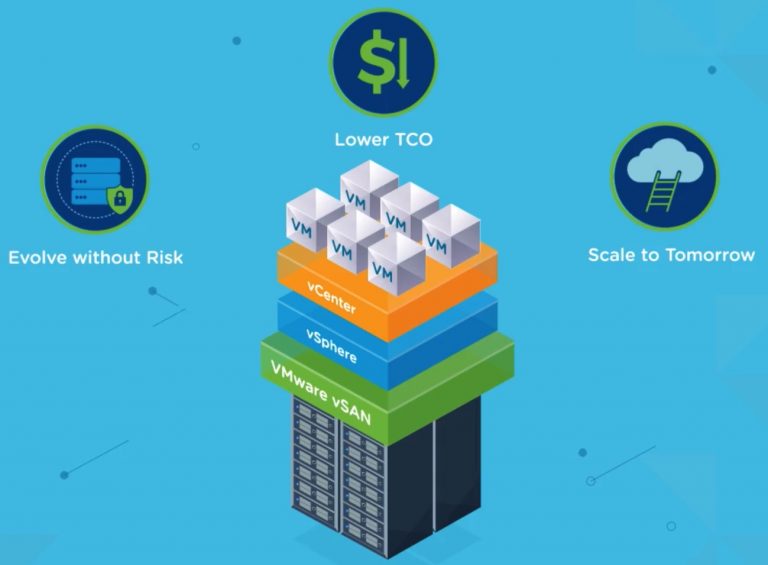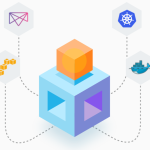Hyper-convergence is a common technology today as it is a combination of both hardware and software solutions. Hyper-converged Infrastructure (HCI) builds private cloud environments that allocate capacity and performance independently for every workload and application.
One promise of Cloud is a fast time to value, and the other is rapid scalability. Scaling cloud workload faster requires immediate response to the changes in a workload, as is required with a new product launch which is a complex process with a private cloud. Hyper-converged cloud infrastructure enables rapid deployment and incremental capacity expansion for a more cloud-like private cloud.
HCI/Cloud in Healthcare Industry
Health care systems need enterprise wide EHRs that require more technology performance and consume fewer resources. IT teams are under pressure to deliver highly resilient platforms in less time simultaneously reducing operating costs. Health care organisations are implementing HCI technology as the industry seeks scalable storage, disaster recovery solution and virtual data access to digitised patient information. To increase operational performance and reduce downtime, healthcare systems need to implement the right systems and solutions to maximise uptime.
As COVID-19 hit the world, the healthcare industry implemented several ways to effectively support the ascending technology demands of the COVID-19 pandemic from enabling remote work, to implementing telehealth practices, to supporting an increasing patient load. As a result, they sought out IT solutions that could support their organizations growing needs and support their digital transformation.
Consolidating systems in the cloud requires an increased focus on reliable internet connectivity. This consolidation removes risks and gives more control over the data. Virtualisation helps healthcare teams to move critical applications easily between on-premises installations and the cloud by reducing the hardware and carbon footprints of the data centres, lowering the energy costs, and simplifying management.
Benefits of HCI in the Healthcare industry:
HCI/Private cloud offers many benefits to healthcare industries to do their business easily:
- Delivers robust, scalable, and rapid solutions that can migrate your on-premises infrastructure to the cloud environment and manage the cost and performance.
- Manages virtual desktop environments.
- Offers industry-based application programming interface (API) management to support all current and future applications.
- Provides security and privacy to manage healthcare data.
Media and Entertainment Industry
The media and entertainment (M&E) industry are facing lot of challenges to ensure postproduction teams have immediate access to workflows and can collaborate with teams across the globe to accelerate the pace of production. Many M&E organisations lack the resources to support tiered virtualisation models with multiple management interfaces and complex design. They need faster content delivery especially when end users are looking to access digital entertainment and content more than ever.
The rapid advances in digital content processing, the internet, IT, and cloud technologies have created immense pressure on content creators and distributors in the M&E industry to work diligently. Consumers choose many options to watch such as DVRs (Digital Video Recorders), advanced set-top boxes or just by downloading content on-demand over the internet. Due to this trend, the M&E industry is struggling with legacy infrastructure and business models.
The media and Entertainment Industry have lots of consumers having unpredictable demands. The on-demand characteristics of the cloud help in solving such types of problems providing increased level of scalability and flexibility, cost-effectiveness and meet the dynamic demand spinning the servers up and down as per user requirement.
Benefits of HCI/ Private cloud in M&E industry
HCI/Private cloud offers many benefits to M&E industries to do their business easily:
- Content creators are under huge pressure to produce and distribute original content more often. Private cloud and HCI enables storing, managing, and delivering a large amount of content in a faster, dynamic and cost-effective manner.
- Due to an increase in the number of devices and limitations in internet bandwidth, the broadcasters can access their customers using low-cost Over the Top techniques. Broadcasters and media houses are launching their portals or mobile applications to deliver the content directly to the customers. The cloud enables them to safely host their content on the cloud.
- HCI can manage dispersed and redundant architectures that support high availability and high-performance SLAs such as multi-cloud and hybrid deployments to meet the high streaming performance with minimal downtime.
HCI/ Private cloud in IT and ITES industry
IT & ITES industry are facing a lot of challenges due to downtime in the IT infrastructure that can lead to huge losses in productivity. Cloud storage is the most cost-effective and scalable data storage nowadays. But it does not include the required data architecture which can accommodate a variety of applications.
IT/ITES environment demand servers, hardware, licenses, and software installation. Maintenance of these infrastructures is a complex task that requires a lot of funds along with extended deployment cycles. IT industries are turning to hyper-converged infrastructure due to streamlined management, scalable storage, automatic application deployment and cloud service delivery.
Benefits of HCI/Private cloud in IT & ITES industry:
HCI/Private cloud offers benefits are offered to IT & ITES industries to do their business easily:
- Ensures backups and disaster recovery as the data is stored across the globe in a distributed manner. Disaster recovery allows maintaining a backup of entire IT infrastructure in a separate location.
- HCI and private cloud provide scalability and flexibility. The scalability of cloud applications allows to promptly meet an unexpected rise in demands by eliminating unwanted expenditure on idle infrastructural space.
- HCI and private cloud back mission-critical solutions that provide rapid deployment along with substantial benefits and minimal provisioning time.
HCI/Private cloud in Education Industry
Legacy IT infrastructure is a risk of failure that threatens the growing demands of future enterprise applications. IT professionals are facing increasing pressure to deliver infrastructure that provides cloud-like flexibility for the students, faculty, and staff. Hyperconverged appliances simplify IT infrastructure and reduce costs by providing performance or availability using commodity hardware.
The education industry needs a platform that can optimise the performance and availability on a per-application basis so that you can reduce costs and flexibility by running mixed workloads on the same cluster. They can run virtual desktops for computer labs, databases, and other applications side-by-side.
Higher education needs great performance at lower costs such as:
- To support mixed workloads in the cloud, they require a reliable and high-performance network.
- Make learning more accessible through automation in reduced operational expenses.
- Require management of data generated from IoT devices and sensors for actionable intelligence and predictive insights.
Benefits of HCI/Private cloud in the Education industry:
- HCI provides a cost-effective infrastructure with hyper-converged software and commodity hardware which is easy to manage.
- Simplified scaling as your needs grows instead of using separate servers, storage, and networks.
- Minimal hardware requirements as cloud-based applications can work seamlessly on internet browsers, desktops, and mobile devices. Not require external storage as they get free access to cloud-based resources.
- Private cloud and HCI provides higher security and privacy giving greater control and improved reliability.
- The multitenant architecture offers virtual isolation among multiple tenants giving educational institutes to use and customize their application as though they have their instances running.
- Private cloud resources provide more efficiency than public cloud resources.
Netweb deploys a complete data centre for IIT Jammu with HPC, Big data cluster, Private Cloud, and Parallel File system. IIT Jammu pursues research, education, and innovation with a unitary motive to encourage R & D problem-solving capabilities among scholars in different programs. The facility named Augustya, is a unique yet high-performance blend of HPC plus big data, AI and cloud infrastructure.
The challenges were to integrate diverse user requirements, Campus networking and IT services on board in a single infrastructure for optimising users and performance to build a single platform that could serve CPU intensive, GPU intensive and large in memory-based computational leads. Designing and deploying HPC Solutions by providing such a hybrid design of IT infrastructure to IIT Jammu has was a complex task. The process of amalgamating markedly distinct technology platforms, such as HPC platforms together with Tyrone Cloud suit, also known as Tyrone Skylus, along with Hadoop engine has benefited IIT Jammu a lot. A full-scale mixed workload environment with HPC, big data and cloud along with the complete software stack with container-based applications and their framework in a cost-efficient shared infrastructure. AI was added into the mix as an enable for HPC
and big data in case this provided and to end efficiency for applications in a distributed environment on Prem and in the cloud.
For more details, please see the video https://www.youtube.com/watch?v=OXuuHtR1h3E
HCI/Private cloud in Government
Government agencies need to be modernised data-driven IT infrastructure to streamline their work and manage huge data silos. Apart from this, federal agencies face challenges such as lowering costs, simplified IT, better security, improved service, and efficiency. The legacy IT infrastructure challenges like cost and complexity, scalability makes government agencies opt for flexible infrastructure that can scale as per the requirements.
Other mandates include security improvement, increased shared services and collaboration, greater use of cloud and more cost-cutting. Greater use of cloud, data analytics, reducing power and cooling, consolidating applications and data, accelerating IT deployment, and reducing risk are some of the goals of agency IT teams.
The Federal government remains a target for hackers across the globe. Therefore, they require data centre security, secure applications and infrastructure and security in the architectural design.
A hyper-converged infrastructure eliminates many of those challenges as HCI includes everything necessary to stand up a cloud as it is easy to deploy a secure private cloud within a few minutes. A cloud-in-a-box solution to help IT organisations stand up private clouds quickly.
Benefits of HCI/Private cloud in the Government sector:
- HCI support both public and private clouds, they can be useful in cases where some applications and data remain on-premises.
- HCI provides a higher level of security than legacy data centre infrastructure.
- Provides two-factor authentication to protect against unauthorized access.
- Efficient VDI deployment reduces cost and eliminates the inflexible resource provisioning and fragmented infrastructure management that can make VDI deployment complex.
- Provides Flexibility to run multiple applications on a single platform with fast performance in less space.
- With direct access to high-performance environments and datasets, IT and software developers can set up.
HCI/Private cloud in Retail
Managing an IT infrastructure is a challenging task for retailers. Digitisation, mobile, IoT and big data have changed the retail industry. New consumer expectations around real-time access to merchandise, order information and anytime, anywhere access to services have placed more pressure on retailers. Retailers continue to increase their reliance on access to the network to manage inventory, customer information, sale figures, process transactions and many more. Consumers need greater speed; uptime of retail systems are becoming critical to the continuity of retail operations. Managing inventory, workforce, supply chain and transaction processing to web sales, store sales, marketing analytics etc, can be a challenging task.
Benefits of HCI/Private cloud in Retail:
- HCI provides simplified and flexible solutions by integrating storage, servers, and networking under a single system.
- The inbuilt facility to manage and ensure convenience in usability and software-defined storage has a great potential to yield better scalability and resource efficiency.
- Cloud provides the retail industry to scale as per their needs especially when shopping trends change. Organizations can scale up for high periods such as holidays and scale down for slower times in the retail calendar.
- HCI and private cloud provide easy Inventory management by storing your inventory online allowing employees to access inventory information anywhere and make decisions accordingly.


